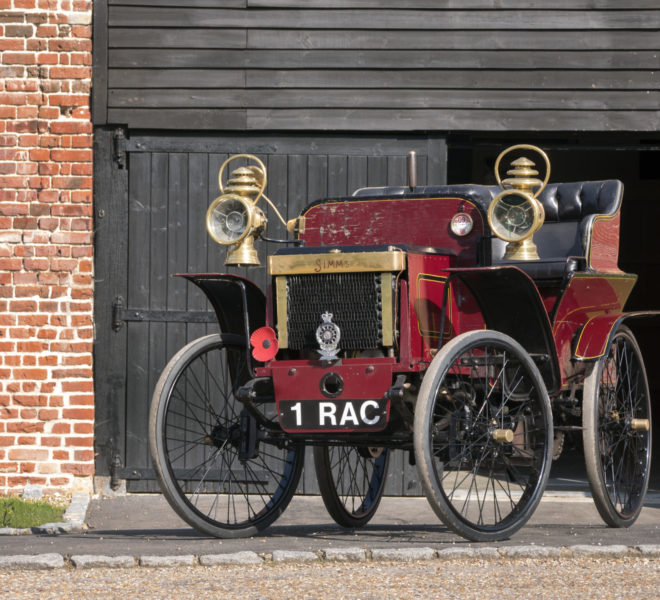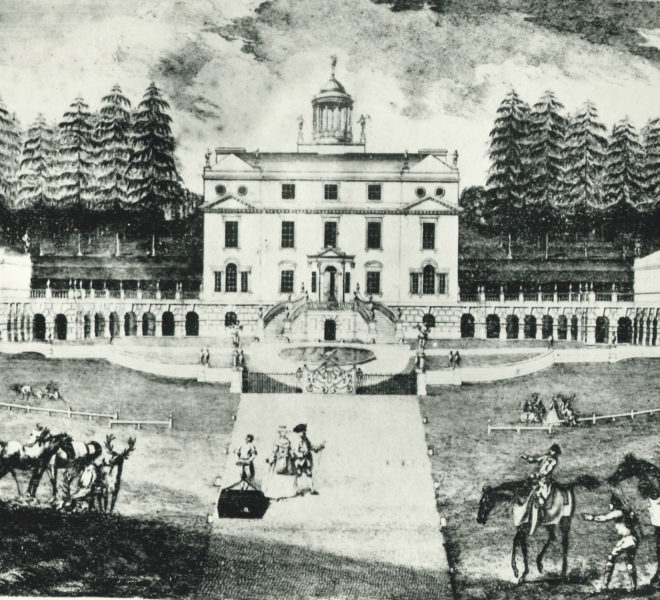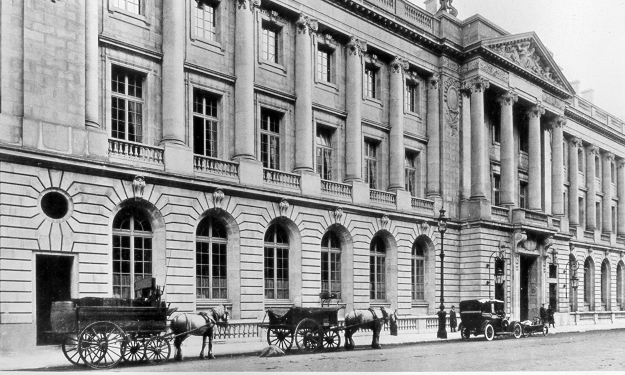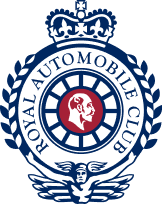Club History
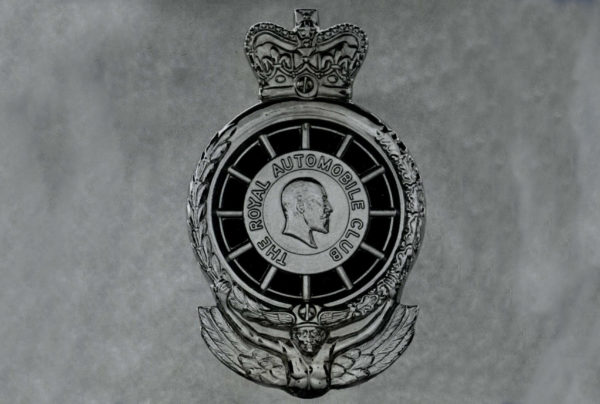
In 1895, Frederick Richard Simms (1863-1944) and Sir David Salomons founded the Self-Propelled Traffic Association for ‘horseless carriages’ in anticipation of the imminent repeal of the 1865 Locomotives Act (or ‘Red Flag’ Act). Shortly after that, Simms also set up also the Motor Car Club with Harry J. Lawson. It was not long, however, before he took the view that his co-founder was ‘manipulating’ the MCC to promote his commercial interests – so Simms resigned. He had visualised a ‘purer’ organisation that would foster, benevolently, the growth of automobilism across the whole country. Consequently, Simms and Charles Harrington-Moore (Secretary of the MCC) adopted the constitution of the Automobile Club de France (founded 1895), modified its framework where necessary, and together created the Automobile Club of Great Britain (& later Ireland). Formal inauguration of the ACGB took place on 8th December 1897.
Earlier in February 1896, Simms had demonstrated a Cannstatt-built Daimler to the then Prince of Wales in the grounds of the Imperial Institute in Kensington, West London. That meeting was to ignite His Royal Highness’ life-long passion for the motor car. And one consequence was that His Majesty King Edward VII, as he later became, decreed in 1907 that the ACGBI should henceforth be known as the ‘Royal Automobile Club’. Simultaneously, he afforded the Club the rare honour of using his profile on the Club badge.
The first headquarters of the ACGBI (just four rooms) were at 4 Whitehall Court, London, near the Houses of Parliament; it remained there until 1902. Then it moved to 119 Piccadilly, and surrounding offices in nearby Down Street.
Due to that restrictive 19th century legislation, the United Kingdom had lagged far behind continental Europe in the development of the automobile movement; this country, partly therefore, saw exponential growth of the industry in the first few years following the repeal of the Red Flag Act. So, the need for the Club to acquire larger premises had become readily apparent by 1907. In addition, the Club’s membership had risen from an original 163 members to nearly 3,500 members a decade later.
A grand, new, state-of-the-art clubhouse was therefore considered desirable to reflect the Club’s already established reputation as the ‘Parliament of Motoring’. It commissioned fashionable Edwardian architects Charles Mewès and Arthur Davis to conduct the project, lauded already highly for their treatment of the Ritz hotels in Paris and London and the interiors of many of the great ocean-going liners of the day. With their signature imprimatur, an eclectic mix of Classical, French, and English architectural styles duly characterised the new clubhouse in Pall Mall, with painstaking detail lavished on every area, seen and unseen. After three extraordinary years of construction, the clubhouse finally opened in early 1911 for what then was the huge capital sum of £330,000 (including £80,000 on the interiors).
The Club’s achievements on behalf of automobilism were many in those early years leading up to the First World War. In 1899, it organized a major motor show in Richmond, Surrey; while a notable exercise in marketing, it nevertheless incurred a major financial loss for the Club. On founding the Society of Motor Manufacturers and Traders in 1902, Simms took over the responsibility for future events of this type, and with markedly more success. In 1900, Claude Johnson, the Club’s first Secretary (Chief Executive) organised the Thousand Miles Trial, an event pre-eminent in its time for promoting the cause of automobilism; a large group of cars travelled the length and breadth of the country in order to demonstrate to the general public the ‘reliability’ of the ‘motor car’ (a term likely coined by Simms). Over the next few years, further trials followed, all the time advancing this new, richly innovative technology.
The Club equally espoused the interests of the private motorist by setting up its Motor Union section in 1901. This body campaigned vigorously for the 1903 Motor Act which increased speed limits and removed other restrictive legislation. But it was not to have a particularly long life as it broke away from the ‘parental roof’ in 1908 (and was shortly absorbed thereafter into the Automobile Association). Consequently, the Club set up in ‘Associate’ section in the same year with markedly more success. A notable benefit, for example that members of this new body started to enjoy in 1912 was the ‘Get You Home’ service for their broken-down car, of which there was a substantial number in those early days. Touring, legal, engineering, and insurance services were all developed too. And as early as 1905. the ACGBI had been conducting basic driving tests and issuing driving certificates, a responsibility that the government only assumed thirty or so years later.
Boasting a handsome 350 acres and sitting adjacent to the world-famous Epsom racecourse, the Club purchased Woodcote Park as a country club for recreational purposes in 1913. Tragically, the main clubhouse was extensively damaged by fire in 1934; efficient and exacting rebuilding work by the Mewès & Davis company (although Mewès had died in 1914) saw it reopen, however, just 21 months later.
Members had barely settled into their new clubhouses before the First World War broke out. Both of them were put at the disposal of the armed forces. Pall Mall became, to all intents and purposes, an officers’ club, with the British Red Cross Society using it as well. By Armistice Day, it had provided bed, breakfast, and baths for more than 200,000 officers and served approximately two million meals. Woodcote Park, meanwhile, became a centre for troop training, a role that it was to fulfil in the next war too. It was used extensively as well for agricultural purposes, leaving scars that healed only very slowly in post-war reconstruction. Considering its location, the Pall Mall clubhouse was comparatively fortunate in the Second World War as it took just one direct hit to its beautiful Great Gallery in 1944.
The emergence of motorsport was a natural progression in the wake of increased manufacturing of cars in those early days. The Club put on its first Tourist Trophy race in 1905; to this day, it remains the oldest regularly run motor race in the world. And following the Great War, the Club’s pedigree was further enhanced by its staging of the first British Grand Prix at Brooklands in 1926. Then in 1930, it organised what has become the world-famous London to Brighton Veteran Car Run [for pre-1905 cars], a re-enactment of the 1896 ‘Emancipation’ Run between those two cities; in the Club’s centenary year of 1997, the Run attracted five hundred entries. In 1932, the first RAC Rally took place; various starting points were dotted around the country, with the final rallying point being located at Torquay, Devon. Following the Second World War, the Club arranged the prestigious Grand Prix d’Europe at Silverstone in 1950, marking the emergence of the modern and current Formula 1 era. From the outset then, the Royal Automobile Club has been the governing body for motorsport in Great Britain, a position still holds good today with active participation on the Motorsport UK (formerly RAC Motor Sports Association) Board. The President of both organisations is HRH Prince Michael of Kent.
Despite the wide successes of established clubhouses, aid for the private motorist, and organisation of motorsport, the Club began to lose its general sense of direction over the 1960s and the 1970s. Its finances seriously deteriorated too. Consequently, the Club Chairman called a ‘do-or-die’ meeting in the late 1970s. After much internal scrutiny, the Club duly ‘did’: bringing in corporate (including lady) membership; launching the informative Pell-Mell & Woodcote magazine, which became the main organ of communication among the Full Membership. (Its antecedent, the Club Journal, was sadly never revived after the end of the First World War.) The Club also embarked on an ambitious programme of expansion and refurbishment, with the interiors of the Pall Mall clubhouse being restored to their former glory, an action that paid handsome dividends at the time and is still considered a judicious policy today.
In 1998-99, the Club’s constitution radically changed. Breakdown and its allied services, that branch by which the Club is best-known among the general public, was sold (or ‘demerged’) to the company Lex plc, under the umbrella of ‘RAC Motoring Services’. Millions of Associate members still make use of those services today, nearly one in three of all motorists in the United Kingdom.
Club members have always enjoyed all forms of transportation, whether by land, sea, or air. Members of the ACGBI went on to set up the Royal Aero Club (1901), the Auto-Cycle Union (1903), and the Royal Motor Yacht Club (1905). Motorcyclists within the Club today, although they only form a small band of the Full membership as a whole, nevertheless maintain an active presence putting on a large number of motorcycling events throughout the year.
With total membership having been capped at 17,000 for some years, today’s Full Member – which includes various categories such as ‘Family’, ‘Spouse/Civil Partner’, ‘Young’, and ‘Out of Town’ – can enjoy a great number of activities, but most notably squash and golf. The longevity of both of these sports has played a significant role in the life of the Club for decades and continues to do so today. Approximately 1,200 regular squash players at Pall Mall can claim to participate in the biggest squash league of any commercial organisation in the world; it is widely acknowledged that Club members during the 1920s and the 1930s formed the backbone of England’s amateur squash team. And the Old Course and the Coronation Course at Woodcote Park are two truly championship-standard golf arenas, having hosted a number of prestigious Pro-Am events. Other, more recent additions to the Club’s panoply of outdoor exercise include sub-aqua, skiing, and cycling.
Popular pastimes that the Club runs include a photography, book clubs, backgammon, and even a choir. And there has been a steep rise in recent years in the number and variety of banqueting events at both clubhouses: from wine and cheese tastings, jazz dinners and dances, and members’ weddings to lectures by leading figures in the arts and business – all enhancing the value of Club membership further. Large new structural work has also been carried out at both clubhouses: particularly significant at Pall Mall was the addition of a new fifth floor in 2009-11 comprising twenty-two bedrooms; likewise in scale, at Woodcote Park, an extensive Walled Garden family facility opened in 2021, catering for all ages and generations of Club members, with its terraced café, multi-use games areas, and swimming pool.
Since the demerger a generation ago, the Royal Automobile Club has now reverted full circle back to its historic roots: a foremost private members’ club with the strongest of motoring associations and traditions. The re-convening of the Club’s Motoring Committee in the late 1990s, having laid in abeyance for decades, has seen an active programme of motoring events, trials, rallies, concours, and drive-ins, taking place throughout the year. In this renewed incarnation the Club continues to flourish today.


